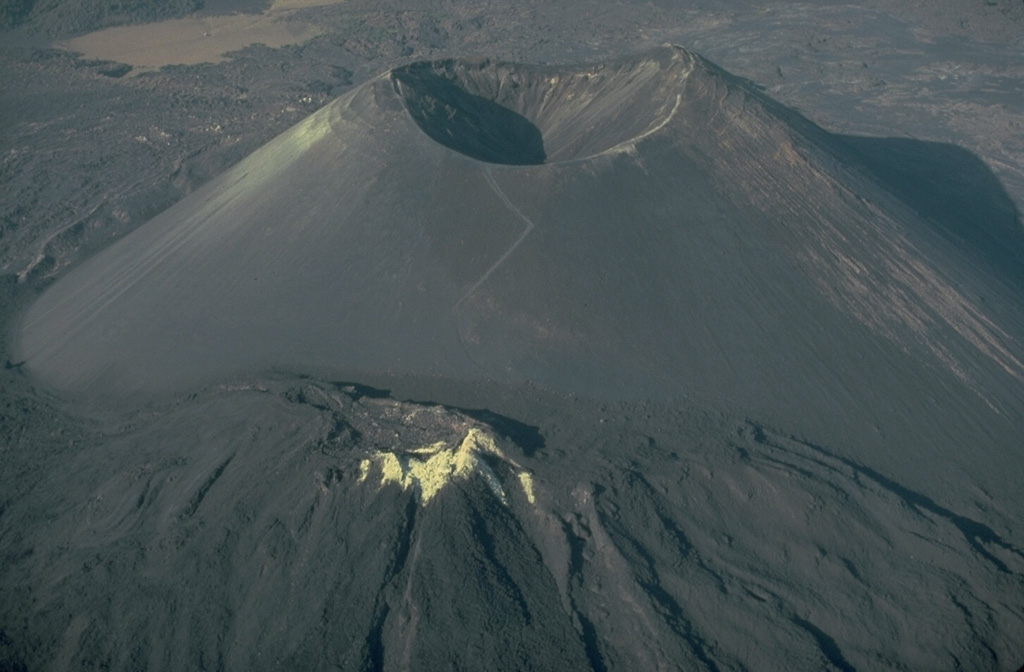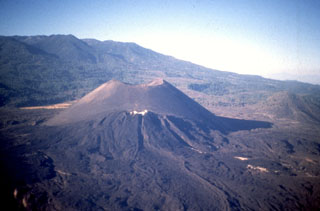Global Volcanism Program | Image GVP-03733

Parícutin cinder cone, born in a Mexican cornfield in 1943, is perhaps the world's best-known example of a pyroclastic cone. Pyroclastic cones (from the Greek words for "fire" and "broken") are created by the accumulation of explosively ejected fragmental material around a volcanic vent. Depending on the dominant type of ejecta, they are called cinder cones, scoria cones, pumice cones, ash cones, or tuff cones. Pyroclastic cones are typically tens of meters to several hundred meters high and often issue lava flows from vents at their base.
Copyrighted photo by Katia and Maurice Krafft, 1981.
Copyrighted image used with permission. All Rights Reserved. Contact photographer for any usage requests.

Michoacán-Guanajuato
